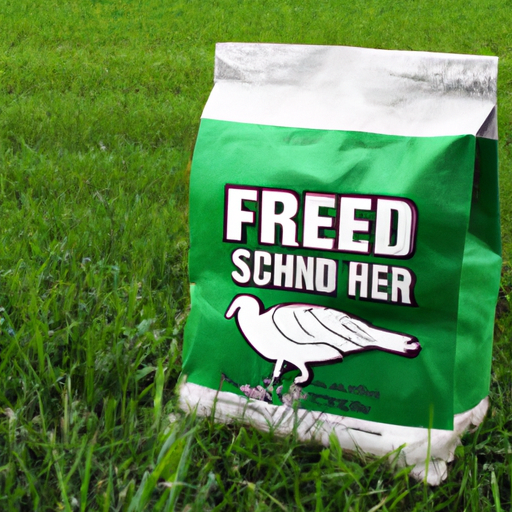If you’re a poultry enthusiast or a backyard chicken keeper, you may have wondered about the cost of chicken feed and whether it changes throughout the year. After all, keeping your flock healthy and well-fed is a top priority. In this article, we’ll explore whether there are any seasonal price fluctuations in chicken feed that you should be aware of. By understanding the factors that can influence the cost of chicken feed, you’ll be better equipped to plan your budget and provide the best nutrition for your feathered friends. So let’s dive into the world of chicken feed prices and uncover the truth behind this common concern.
Factors Affecting Chicken Feed Prices
When it comes to chicken feed prices, several factors come into play. Understanding these factors can help you make informed decisions and manage your feed costs effectively. The four main factors affecting chicken feed prices are supply and demand, crop yield, weather conditions, and transportation costs.
Supply and Demand
Supply and demand is a fundamental economic principle that heavily influences chicken feed prices. If there is an abundance of chicken feed available and the demand is low, prices may decrease. Conversely, if the supply of chicken feed is limited or the demand is high, prices are likely to increase. Therefore, fluctuations in supply and demand can directly impact chicken feed prices.
Crop Yield
The availability and yield of crops used in chicken feed production also contribute to price fluctuations. Factors such as drought, excessive rainfall, pests, and diseases can affect crop yields. A poor crop yield may lead to a reduced supply of feed ingredients, which can drive up prices. On the other hand, a bountiful crop yield can result in an ample supply of feed ingredients, potentially leading to lower feed prices.
Weather Conditions
Weather conditions play a significant role in the production and transportation of chicken feed ingredients. Extreme weather events, such as hurricanes, floods, or severe droughts, can disrupt crop growth and harvesting. These disruptions can lead to scarcity or delays in the availability of feed ingredients, ultimately impacting feed prices. Additionally, adverse weather conditions can also affect transportation, making it more challenging and expensive to move feed from suppliers to consumers.
Transportation Costs
Transportation costs are another important factor influencing chicken feed prices. The distance between feed suppliers and consumers, as well as fuel prices and logistical challenges, can affect transportation costs. Fluctuations in fuel prices or disruptions in transportation infrastructure, such as road closures or logistical bottlenecks, can increase these costs. Higher transportation costs are often passed on to the consumers, resulting in higher feed prices.
Seasonal Trends in Chicken Feed Prices
Chicken feed prices can also vary seasonally. Understanding these seasonal trends can help you plan ahead and mitigate potential price fluctuations throughout the year. Let’s explore the pattern of chicken feed prices during each season: spring, summer, fall, and winter.
Spring
In spring, there are several factors that can contribute to fluctuations in chicken feed prices. Firstly, there is typically an increased demand for chicken feed during this season. As spring often marks the beginning of the poultry farming season, more farmers are restocking their flocks or expanding their operations. This surge in demand can put upward pressure on feed prices.
Additionally, spring is also a harvest season for some key feed ingredients. As crops are harvested and processed, the supply of certain feed ingredients may increase, potentially leading to lower prices. However, adverse weather conditions, such as heavy rain or late frosts, can negatively impact the harvest. Any disruptions to the harvesting process may result in reduced supply and higher feed prices.
Summer
Summer is often characterized by peak demand for chicken feed. Warm weather and longer daylight hours lead to increased poultry production, as chickens tend to consume more feed during this season. With higher demand comes the potential for increased feed prices. However, summer brings its own set of challenges that can affect feed prices.
Crop variability is more common during the summer months due to unpredictable weather conditions. Excessive heat, drought, or sudden storms can damage crops and reduce their yields. This reduced availability of feed ingredients can drive up prices. Moreover, transportation disruptions, such as road closures or high temperatures affecting feed quality during transit, can also impact feed prices during summer.
Fall
During the fall, there are several factors that can influence the price of chicken feed. Firstly, the completion of the harvest season for many feed crops leads to increased availability and supply of feed ingredients. This abundance can potentially result in lower feed prices. As farmers finish harvesting, there is also a chance to assess the crop yields and quality, which can further affect the price of feed.
Another significant factor during the fall is the availability of new crop varieties. If new crops are introduced to the market, it may lead to changes in feed formulations and availability. The transition to these new crops can take time, potentially causing temporary fluctuations or adjustments in feed prices. Additionally, as the demand for chicken decreases after the summer peak, there is typically a decreased demand for chicken feed, which can further impact pricing.
Winter
Winter is generally characterized by the lowest demand for chicken feed. As the colder weather slows down poultry production, the demand for feed decreases. This lower demand often results in more stable feed prices during winter. However, there are some challenges specific to this season that can affect feed prices.
Transportation challenges can arise during winter due to adverse weather conditions like snowstorms, icy roads, or low temperatures. These challenges can increase transportation costs and potentially lead to delays in feed delivery, impacting feed prices. It is important to consider these challenges while planning for winter feed procurement.
Strategies for Dealing with Seasonal Price Fluctuations
Managing seasonal price fluctuations in chicken feed can be challenging but not impossible. Here are some strategies that you can consider to navigate through these fluctuations effectively:
Stockpiling Feed
One strategy to mitigate the impact of price fluctuations is to stockpile feed when prices are low. By purchasing feed in bulk and storing it properly, you can ensure a steady supply of feed during times of increased demand or higher prices. However, it is important to carefully monitor feed quality and storage conditions to prevent spoilage or degradation.
Adjusting Rations
Another approach is to adjust the rations fed to the chickens based on their nutritional needs. By working closely with a poultry nutritionist or veterinarian, you can optimize the feed formulation and make adjustments as needed. This can help you optimize feed utilization and potentially reduce costs.
Long-Term Contracts
Establishing long-term contracts with feed suppliers can provide stability in pricing and supply. By entering into agreements that lock in feed prices over an extended period, you can protect yourself from sudden price increases. However, it is crucial to carefully review the terms and conditions of these contracts to ensure they align with your specific needs and circumstances.
Diversifying Suppliers
Diversifying your suppliers can help mitigate the risks associated with fluctuations in feed prices. By working with multiple suppliers, you can take advantage of different pricing structures and ensure a steady supply of feed, even in the face of disruptions or shortages.
Monitoring Feed Prices
To effectively manage chicken feed prices, it is essential to constantly monitor market conditions and stay informed about industry trends. Here are some methods you can employ to stay updated:
Local Market Analysis
Regularly analyzing the local market conditions can provide valuable insights into feed price trends. Keep an eye on local feed prices, observe any fluctuations, and understand the factors driving those changes. This information can help you make informed decisions regarding feed procurement.
Industry News and Reports
Stay connected to industry news and reports related to poultry farming and feed production. These sources often provide updates on market conditions, crop forecasts, and other factors that can influence feed prices. By staying informed, you can anticipate potential fluctuations and make necessary adjustments to your feed management plans.
Networking with Other Farmers
Building a network of fellow farmers can be an excellent resource for information sharing and support. Join local farming communities, attend industry events, or participate in online forums to connect with other farmers. By exchanging knowledge and experiences, you can gain valuable insights and stay updated on feed price trends in your region.
Final Thoughts
Managing chicken feed costs requires an understanding of the factors that influence price fluctuations and the strategies to mitigate their impact. By considering factors like supply and demand, crop yield, weather conditions, and transportation costs, you can make informed decisions regarding feed procurement. Additionally, being aware of seasonal trends in feed prices and employing strategies like stockpiling, adjusting rations, entering into long-term contracts, and diversifying suppliers can help you navigate through price fluctuations effectively. Remember to keep a close eye on feed prices through local market analysis, industry news and reports, and networking with other farmers. By staying proactive and seeking professional advice when needed, you can better manage your feed costs and ensure the overall success of your poultry farming operations.




